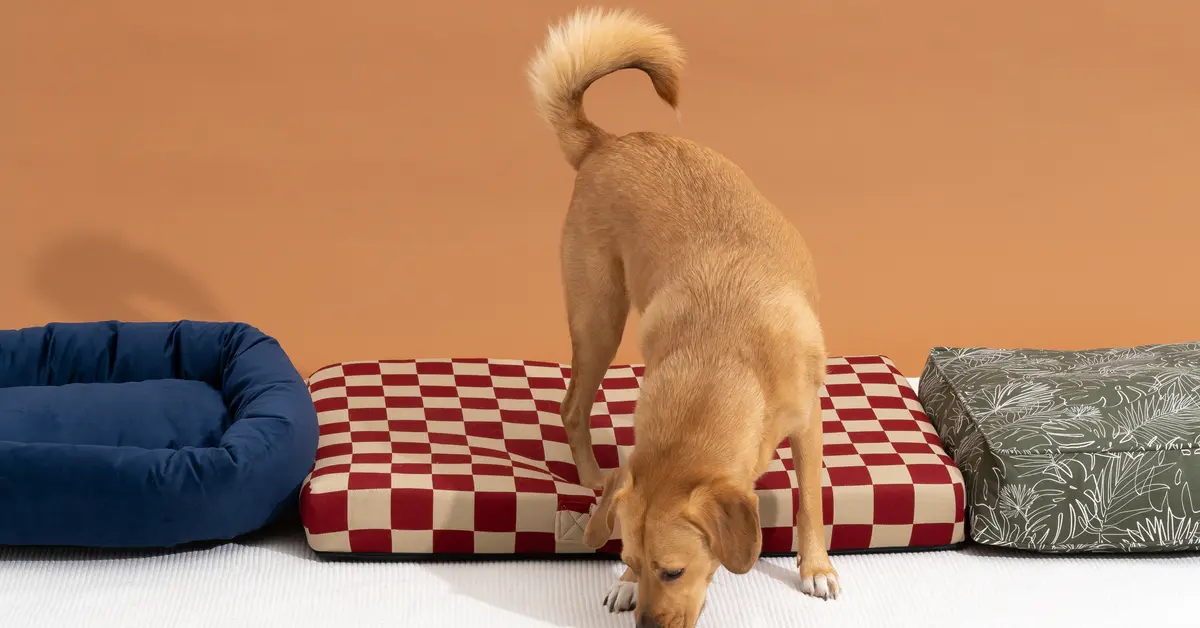Ergonomic pet beds are designed to provide optimal comfort and support for pets, particularly addressing their musculoskeletal health. These beds often incorporate materials like memory foam to contour and support a pet’s body, alleviating pressure points and promoting proper spine alignment.
The goal is to enhance sleep quality and overall wellness, making them especially beneficial for ageing pets or those suffering from bone and joint conditions. These beds come in various shapes, sizes, materials, and designs, catering to different needs and ensuring that pets have a favourable surface for rest.
Consult your vet for product recommendations and also consider being prepared with cheap dog insurance at least. One reason to consider getting a policy is pet insurance costs can be more bearable than bills you may have to cover during non-routine vet trips and medical emergencies.
Think about it. In the meantime, read this article to learn the benefits of ergonomic beds for dogs.
Ergonomic pet beds benefits
An ergonomic bed is designed to support your dog’s body, particularly their joints and spine, promoting better sleep and comfort.
Dogs, especially seniors or those with specific health conditions, can benefit from the orthopaedic features of ergonomic beds. These beds often incorporate specific materials to ease stress points and provide optimal joint support, helping with conditions like arthritis or hip dysplasia.
These beds are designed to accommodate your dog’s natural sleeping positions. They offer a balance between softness and firmness, ensuring that your dog’s body is properly aligned during sleep, contributing to better health.
Furthermore, ergonomic beds are durable and long-lasting, providing a stable and secure surface for your dog to rest. This can be particularly important for larger breeds or dogs with a higher risk of bone and joint issues.
Consider your dog’s age, size, and any existing health conditions when choosing an ergonomic bed. Regularly cleaning and maintaining the bed is essential to ensure its effectiveness and hygiene.
While ergonomic beds may have a higher upfront cost, the long-term benefits for your dog’s health, especially if they are prone to musculoskeletal issues, make them a valuable investment in your pet’s comfort and well-being.
Consult your vet to determine the most suitable bed for your dog’s specific needs. Pet-friendly bed materials prioritise durability, comfort, and hygiene. Look for beds made from:
- Water-resistant fabrics: To guard against accidents and spills.
- Machine-washable Covers: Facilitating easy cleaning and maintenance.
- Chew-resistant materials: Essential for teething puppies or dogs with a chewing habit.
- Hypoallergenic fabrics: Ideal for pets with sensitivities to allergens.
- Non-skid bottoms: Preventing slips and slides, especially on smooth surfaces.
- Breathable fabrics: Ensuring proper ventilation for temperature regulation.
- Stain-resistant materials: Guarding against stains and odours for a clean sleeping environment.
- Durable zippers and stitching: Providing longevity and withstanding regular use by active pets.
- Eco-friendly materials: Prioritising sustainability without compromising comfort and durability.
Wrong bed types can impact a dog’s health negatively. Inadequate or improper support may cause or aggravate existing joint pain, affect mobility and exacerbate orthopaedic conditions like arthritis.
Incorrectly sized or uncomfortable beds can cause posture issues and disrupt sleep quality and comfort, contributing to potential behavioural and health problems over time.
Choose the right bed and consider being prepared with cheap dog insurance to handle any health emergencies more efficiently.
Pet insurance costs can be much lower than surprising vet bills you may have to pay upfront during unplanned vet visits, so contemplate getting a policy.


